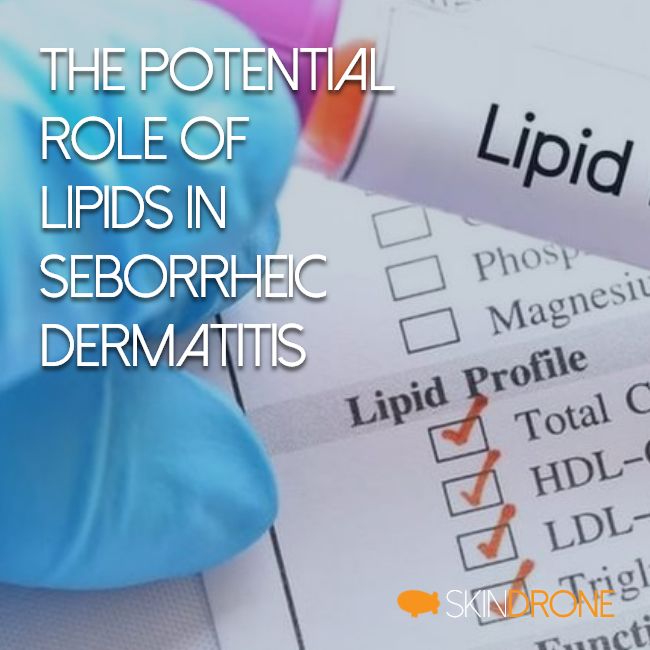- Key takeaway: Balanced omega-3 and omega-6 intake is crucial for overall health and may play a significant role in skin conditions like seborrheic dermatitis.
- Omega-6 fatty acids: Vital for skin barrier function, but modern diets often lead to excessive intake, potentially disrupting the omega-6 to omega-3 ratio.
- Omega-3 fatty acids: Known for their anti-inflammatory properties and immune modulation, yet under-researched in the context of seborrheic dermatitis.
- Seborrheic dermatitis link: Imbalances in essential fatty acids and increased oleic acid in sebum are theorized to contribute to seborrheic dermatitis.
- Research direction: While specific studies on omega-3s and seborrheic dermatitis are lacking, research suggests that improving omega-3 to omega-6 ratio may offer benefits for inflammatory skin conditions.

The Potential Role of Lipids in Seborrheic Dermatitis
Lipids are vital for health, supporting immune function and overall well-being. While most western diets easily provide sufficient lipids, the type of lipids, particularly omega-3 and omega-6 fatty acids, is critical for balanced health and stable immune function. These are termed essential fatty acids (EFAs) because our bodies can’t produce them, and they are crucial for preventing various health issues.
The connection between essential fatty acid balance and seborrheic dermatitis has been previously touched upon when discussing fatty acid metabolism. This article delves deeper into the dietary importance of essential fatty acids and their potential role in seborrheic dermatitis.

Why Balancing Essential Fatty Acids Matters
As previously discussed, maintaining a proper balance between omega-3 and omega-6 fatty acids is crucial for health. Key points to remember are:
- Optimal Ratio: The balance of omega-3s to omega-6s is a critical factor in maintaining health [1].
- Dietary Shifts: Modern food processing and dietary habits have significantly skewed this balance [2].
- Inflammation Link: A high omega-6 to omega-3 ratio is associated with increased risk of chronic health conditions and immune system problems [3].
Many contemporary diets are characterized by an imbalanced intake of essential fatty acids. Some researchers propose this imbalance as a significant factor in the rising prevalence of inflammatory disorders observed in the western world [4].

Omega-6 Fatty Acids and Skin Health
Research on essential fatty acids and skin conditions has largely concentrated on omega-6 fatty acids. Key findings include:
- Skin Barrier Support: Linoleic acid and its derivatives are essential for the structure and function of the skin’s natural barrier [5, 6].
- Consequences of Deficiency: When polyunsaturated fatty acids are deficient, oleic acid may compensate, leading to abnormal skin permeability and appearance [7, 8, 9].
- Water Loss and Inflammation: Polyunsaturated fatty acid deficiency can result in increased transepidermal water loss and trigger inflammation-related keratins [10].
- Atopic Dermatitis Studies: Studies have observed lower levels of GLA and higher LA levels in individuals with atopic dermatitis. However, supplementation with evening primrose oil (GLA-rich) has shown limited and inconsistent benefits [11].
Omega-6 fatty acids are clearly important for skin health, particularly for maintaining the skin barrier. However, inconsistent results from supplementation studies and the low likelihood of deficiency in modern diets leave many questions unanswered about their direct therapeutic use for skin conditions.

Omega-3 Fatty Acids and Skin Health: An Understated Role
Omega-3 fatty acids are less frequently discussed in the context of general skin maintenance compared to omega-6s. While recognized for their crucial role in modulating inflammation and immune responses [12], their specific relevance to skin health warrants closer examination.
Consider these key points:
- Inflammation and Skin Defense: Skin defense mechanisms often involve inflammation, and many skin diseases have a microbial component [13].
- DHA and EPA Importance: Two omega-3s, DHA and EPA, are vital for proper immune function and inflammation control [4].
- ALA Conversion: If dietary intake of DHA and EPA is insufficient, the body must convert ALA (alpha-linolenic acid, found in plant oils) into DHA and EPA [14].
- Metabolic Pathway Competition: The conversion of ALA to DHA/EPA utilizes the same enzymes (desaturase enzymes) as the conversion of LA to ALA [15].
Imagine a scenario with insufficient dietary EPA and DHA, combined with limited desaturase enzyme availability. The body would then need to prioritize enzyme allocation between omega-3 and omega-6 conversion. In such cases, a deficiency in long-chain omega-6 fatty acids might arise partly from high omega-3 conversion demands and reduced desaturase enzyme availability.
Therefore, an imbalanced ratio of essential fatty acids could significantly contribute to chronic inflammatory skin conditions. Although omega-3 supplementation studies have yielded mixed results, optimizing the omega-3 to omega-6 ratio appears to hold potential benefits, especially when considering dosage and duration.

Fatty Acid Balance and Seborrheic Dermatitis: What the Research Suggests
Research directly investigating fatty acid balance in seborrheic dermatitis is limited. However, initial findings regarding polyunsaturated fatty acid availability offer some clues:
- Infantile Seborrheic Dermatitis Study: A study of 30 children with infantile seborrheic dermatitis showed significant differences in blood EFA levels compared to healthy children. Normalization of EFA levels coincided with skin improvement [19].
- Seborrheic Dermatitis vs. Healthy Individuals: A comparison of 30 individuals with seborrheic dermatitis to 30 healthy individuals revealed lower levels of both EFAs and Vitamin E in the affected group [20].
Notably, research specifically examining the link between omega-3 balance and seborrheic dermatitis progression is lacking. Given omega-3 fatty acids’ crucial role in immune function and inflammation, this gap in research is surprising, especially considering the established microbial and inflammatory components of seborrheic dermatitis.
While direct seborrheic dermatitis studies are scarce, research on related skin conditions offers relevant insights:
- Atopic Dermatitis Improvement: Omega-3 supplementation improved atopic dermatitis severity in 1-year-olds [21].
- Acne Reduction: Omega-3 fatty acid supplementation (EPA, DHA, and ALA) significantly improved both inflammatory and non-inflammatory acne lesions [22].
- Psoriasis Benefits: Intravenous omega-3 fatty acids showed superior results compared to omega-6 fatty acids in treating chronic plaque-type psoriasis [17].
- Sunburn Resistance: Daily EPA supplementation improved resistance to sunburn and reduced UV radiation-induced cellular damage markers [23].
This evidence suggests that increasing omega-3 intake may have therapeutic potential for various chronic inflammatory skin conditions. Further research is needed to explore their specific role in managing seborrheic dermatitis.
Oleic Acid, Essential Fatty Acid Deficiencies, and Seborrheic Dermatitis: A Potential Connection
Another critical aspect to consider is the consequence of essential fatty acid deficiency and its potential link to seborrheic dermatitis. Consider these points:
- Oleic Acid Compensation: When deficient in linoleic and alpha-linolenic acids, the body increases palmitoleic and oleic acid levels in sebum [24].
- Skin Barrier Disruption by Oleic Acid: High concentrations of oleic acid can disrupt the skin barrier [25].
- Malassezia and Oleic Acid in Seborrheic Dermatitis: Oleic free fatty acids, released by Malassezia yeast, are implicated in causing seborrheic dermatitis symptoms [26].
Therefore, a relative deficiency in omega-6 fatty acids (possibly due to metabolic issues) might lead to elevated oleic acid concentrations in sebum. This increased oleic acid could weaken the skin barrier, increase irritating oleic free fatty acids, and hinder skin healing—potentially contributing to the development of seborrheic dermatitis.
This is just a theory and there isn’t any concrete evidence
Currently, there’s no definitive proof that increased oleic acid in sebum is the primary cause of seborrheic dermatitis. However, future research may reveal valuable insights.

Section Summary
This section explored the following key points:
- Lipids are essential for healthy cells and play a critical role in stable immune function.
- Omega-3 and omega-6 fatty acids are essential lipids that must be obtained through diet.
- Imbalances in the omega-6 to omega-3 ratio can negatively impact health.
- Modern diets often result in a skewed ratio, with excessive omega-6 and insufficient omega-3 intake for many individuals.
- Research on skin health has primarily focused on omega-6 fatty acids and their role in skin barrier function.
- Omega-3 fatty acids, while less studied in skin disease, are crucial for inflammation regulation, suggesting a potential role in skin health.
- Omega-3 deficiency might limit metabolic enzyme availability for omega-6 conversion, impacting skin health.
- Improving the omega-3 to omega-6 ratio has shown benefits for various inflammatory skin conditions.
- Elevated oleic acid in sebum, potentially linked to essential fatty acid imbalances, is theorized to be a factor in seborrheic dermatitis, though more evidence is needed.

No Comments
Be the first to start a conversation